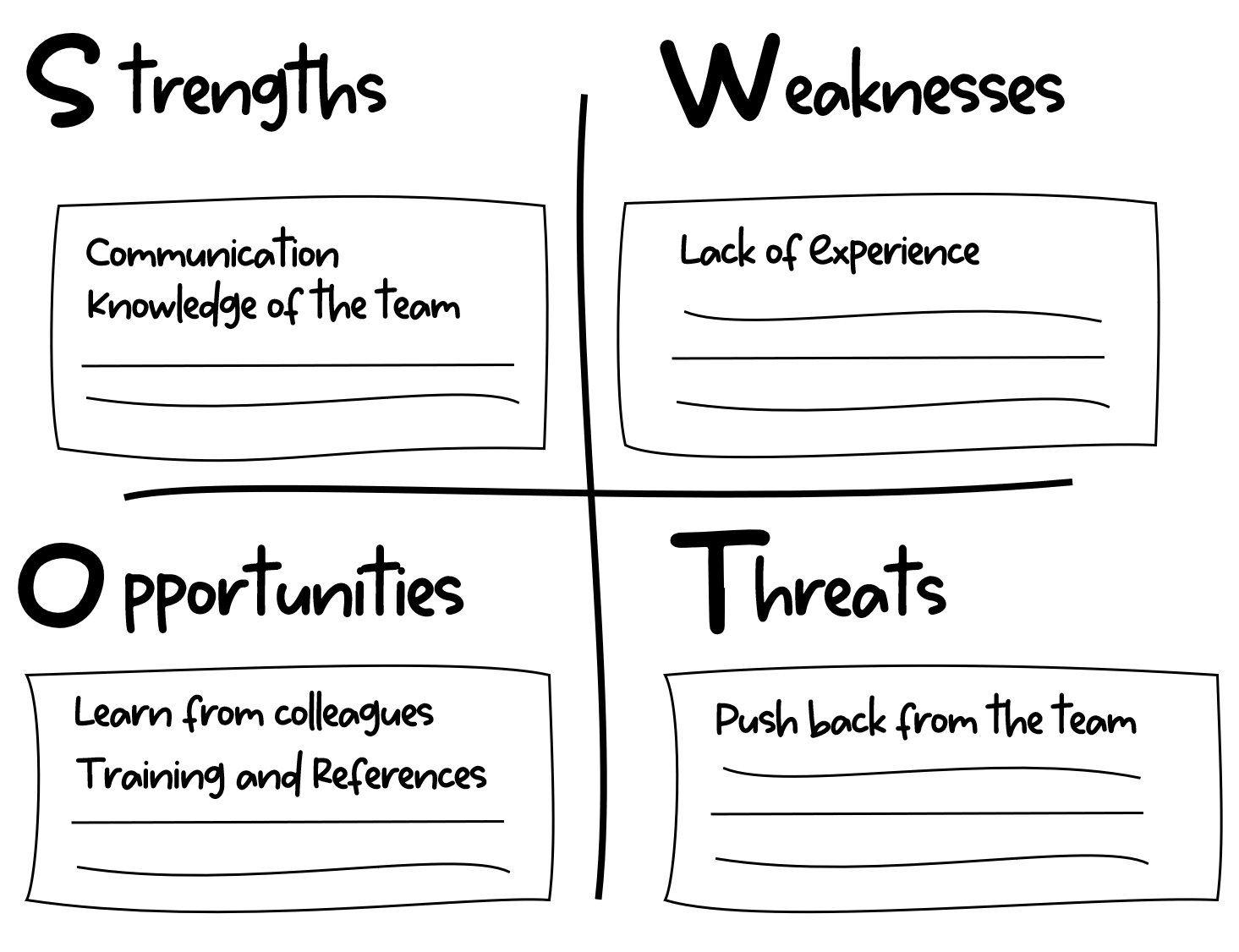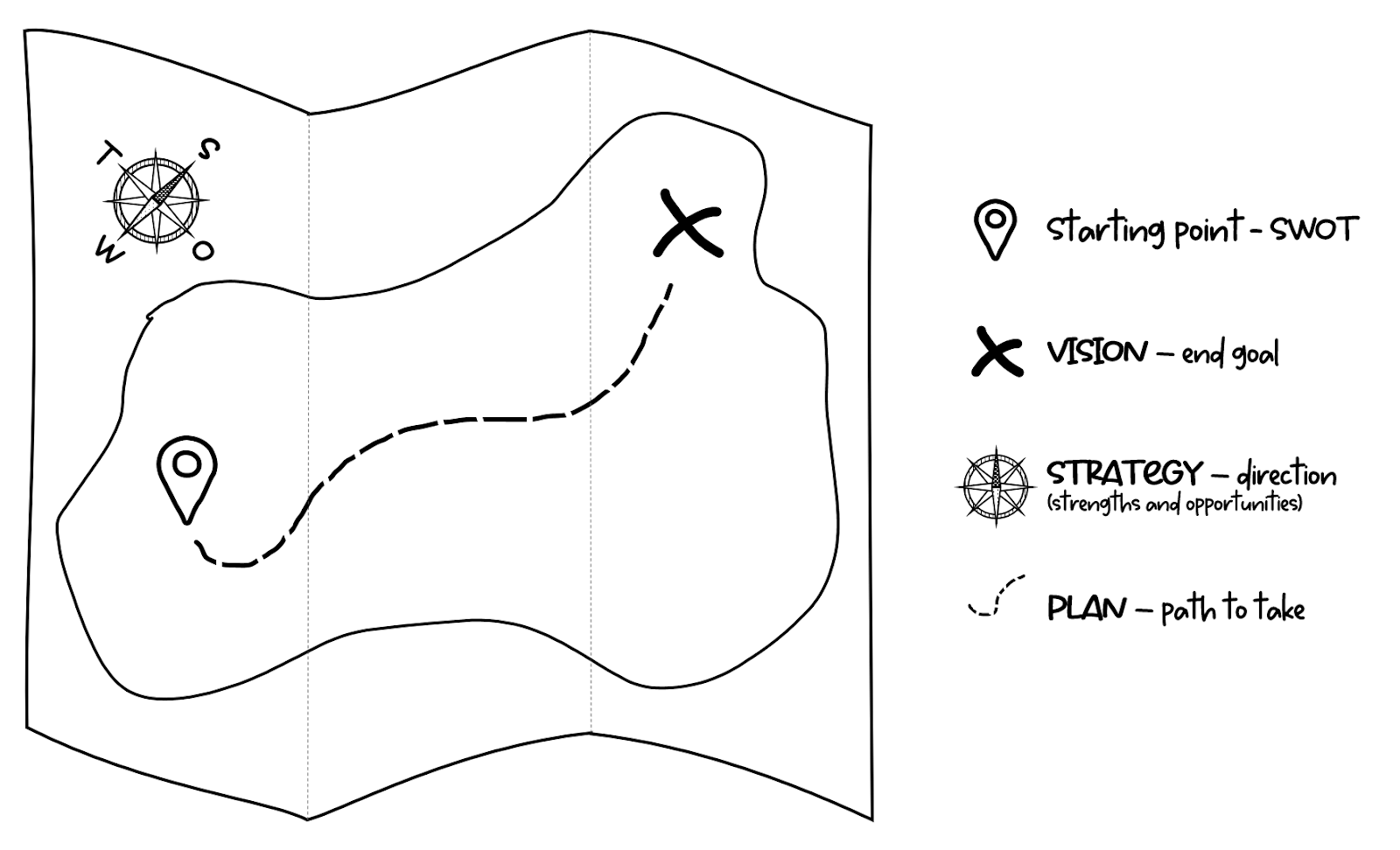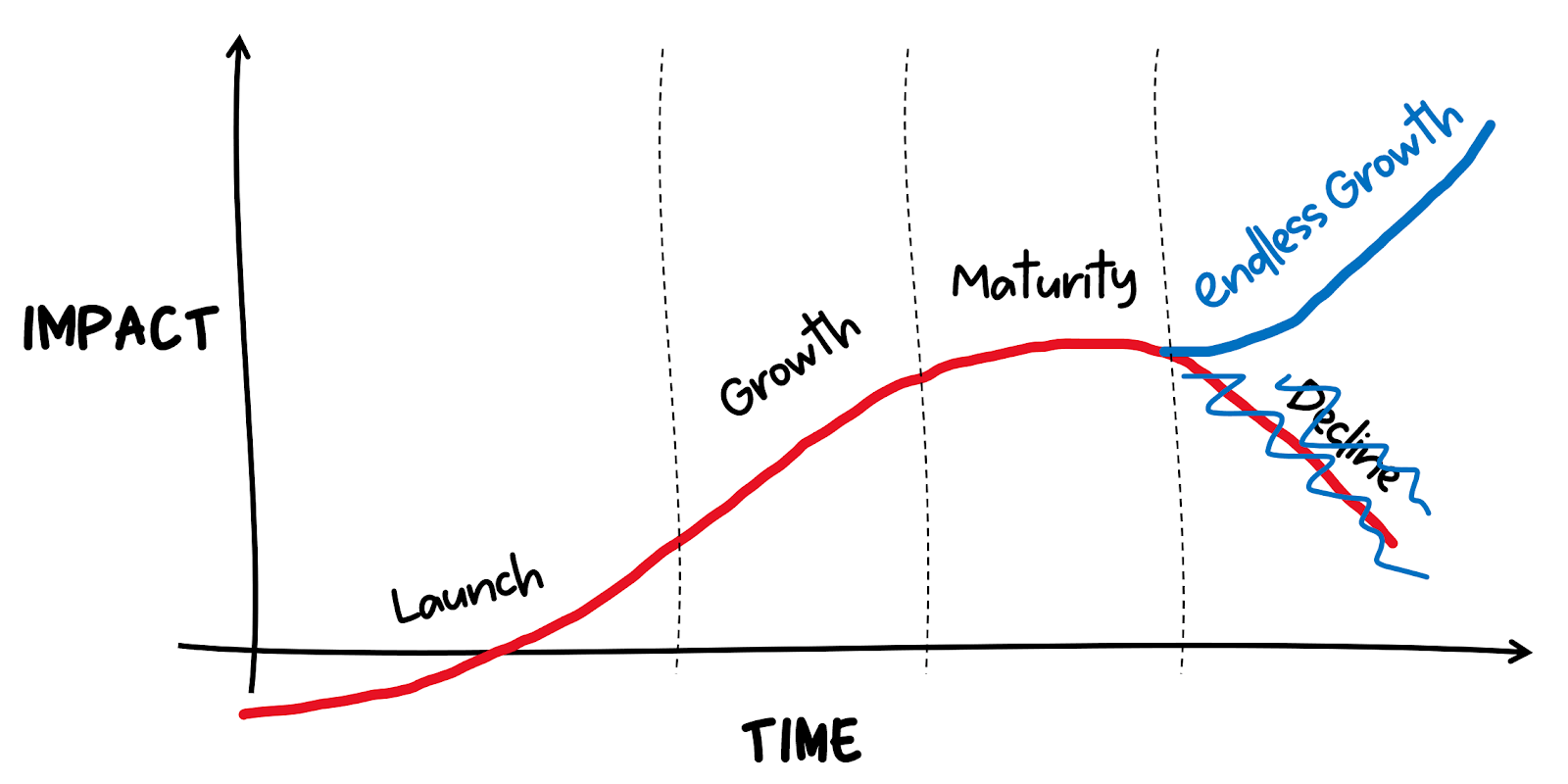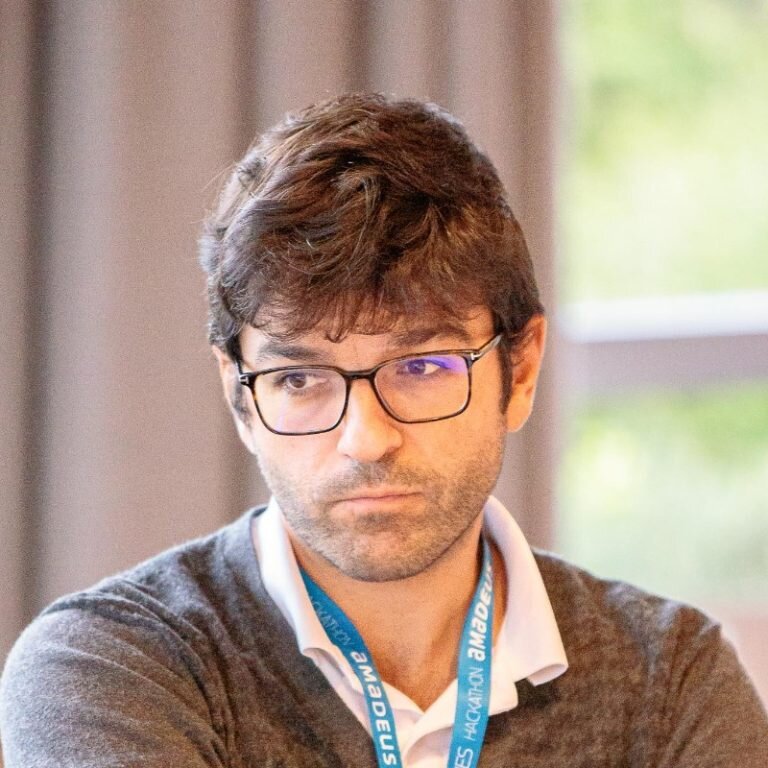After seven years working in product, I had the opportunity to become People Manager. Using the skills and knowledge I got over the years working with products, I framed this change in familiar terms that helped me in the transition: SWOT analysis, Vision, Product Lifecycle, Market fit… Whether you're considering taking a similar step in your career, or not, I'm sure this article will inspire and help you.
Two years ago, I started a new and exciting period in my professional career as unit manager – or team leader, or team responsible, the naming depends on the company. I became the people manager of a team of five digital product managers… my former colleagues.
Even though the formal role change happened overnight, the selection process took quite some time. While going through the different interviews I had to face, I got some time to think and ask myself many questions:
- Do I have what it takes to become people manager?
- How would it be if I get the position?
- What do the team members expect from their people manager?
With these questions in mind, I soon realized that the skills I had developed as a product manager could be very useful to answer them and become a great people manager. The idea was to think about my career change – from Individual contributor to people manager – in product management terms:
- Which resources do I have? What are my strengths and weaknesses?
- What’s my Vision, my Strategy and plan as a people manager?
- Who are my Customers? What are their needs? Which problem do I want to solve for them? How can I fit in the Market?
Strengths and weaknesses – SWOT analysis
To know if I had what it takes, I had to analyze myself and the situation, find my strengths and weaknesses, and ultimately try to identify which opportunities and threats I may face in the future. In other words, I had to perform a personal SWOT analysis.
This analysis gave me a unique perspective of myself and helped me to start defining a formal approach in order to get the maximum of my strengths and take advantage of the opportunities while trying to mitigate and reduce the impact of the threats.

Vision, strategy and lifecycle
The SWOT can be seen as the starting point but also the compass to guide my journey helping me to frame the Vision (end goal), the strategy (direction) and the plan (path to take). Let’s have a look at each of them.

My Vision was obvious: “become the best possible manager”. However, as this statement is too vague, I had to frame it differently to make it relevant. At the time, I had heard about Amazon's "Working Backwards" method and I thought it could be useful, inspiring and fun to apply it to my role. What follows is an extract of one of the fictitious statements from one of the team members, to illustrate what I wanted to achieve after 1 year in the role:
“Dani’s proximity, transparency and continuous feedback have empowered me to thrive in the digital product management organization. I know I can trust him, and I feel he trusts me, as he has proven several times. He has helped me grow both personally and professionally”
With these statements as reference – and considering the SWOT elements as the compass to show the direction – my strategy came up easily. I defined it around three main axes:
- Transparency: Transparent communication and mutual trust.
- Support: team members for personal growth.
- Adaptability: and continuous learning and improvement.
Once the vision and strategy were clear, I could formalize the plan, the path to get there. When thinking about the plan, the first thing that came to mind was the Product Lifecycle (PLC) – I trust that, as product people, you are familiar with the concept and the main steps in the life of a product: Introduction – Growth – Maturity – Decline.
My evolution as People Manager could be framed in similar terms, with a very important change: remove the decline phase and include the endless growth step.

Launch – development and introduction
Starting a new position as people manager could be quite complex, as complex as launching a product. You must learn your new skills and capabilities – develop the product – and position yourself within the team and the company – introduce the product in the market.
I was lost in a complex and unknown area, and I looked at the compass (the SWOT) for guidance. The opportunities I had identified were key: Learn from colleagues and training and references – including books and articles.
Thanks to the wise advice from my colleagues with more experience and the book I chose as reference: Your First 100 Days by Niamh O'Keeffe, I could approach the launching step focusing on the important things and disregard useless distractions:
| Important | Distractions |
|
|
Growth
Once the product is launched, it's time to grow in capabilities – product evolution – and in the market – increase the reach and footprint. In my case it was time to grow too; expand the range of responsibilities and increase the impact in the team and in the company overall.
For the first couple of months I was running the beta version of the product, with limited management skills but a big continuous learning module – my desire to absorb as much knowledge as possible from training, colleagues and literature (remember, these elements appear as opportunities in the SWOT analysis).
By March 2020 I “released” the first major version and launched the progressive growth process. It was also the start of the expansion of the global pandemic, the beginning of the lockdown (at least in Europe) and the kick-off of the so-called "working from home” era. If we add on top of that the devastating economic and human effect the pandemic had on people and companies, we can quickly realize how important the role of people manager became.
Reassuring my team members, being available for them and building a remote team spirit that could somehow compensate for the tough times
I previously explained that, as for products, you should define a vision, a strategy and even a concrete execution plan for the role transition. However, you must always remain flexible and adaptable, mostly in the execution part, when big external factors have a strong impact on the context.
With the pandemics, priorities changed overnight, and I had to delay some parts of my initial plan. I fully focused on reassuring my team members, being (even more) available for them and building a remote team spirit.
Maturity and endless growth:
After six months, more or less – Summer 2020 – I reached the maturity level; my position was well established, together with the team we had managed to build a great team spirit and I had managed to have a personal impact in each team member and in the organization.
I managed to start running some formal initiatives in the shape of weekly meetings, to help my team, and myself, grow – we can call this Premium Features:
- T-shape the team: the idea is to get team members and external guests to help the team to enlarge the "T-shape" and become familiar with other products managed in the team and, more generally, with the company's processes and organization.
- Product management best practices: these sessions were round-table discussions about different aspects of the product manager role. Each week, I prepared and brought a topic to the table, share some context and launch the discussion. I strongly believe that beyond our daily activities, it's essential to book some time for the bigger picture and keep an eye on the industry best practices.
These are just two examples of initiatives to illustrate how I approached the maturity phase. These recurrent exercises helped my team and myself to grow in knowledge and skills and to keep the team spirit high. While running one initiative I would always look for ideas for the next one, and my colleagues, my friends and the Internet are great sources of inspiration.
As product managers, we should target the same for our products, delay the decline phase as much as possible and reinvent as many times as necessary to keep the impact of the product in the market.
Customers and market fit
My customers and market were my team members. Looking at them from a product perspective, I could say I had a small niche market, with a wide variety of needs and problems to solve. I had to provide a personalized version of my product for each of them.
My team had five members and I can hardly imagine a bigger variety in such a small group of people:
- Different educational backgrounds: software and computer science, aeronautical engineering, digital marketing, operational research and economics…
- Four different nationalities and cultures, from three different continents: India (2), Belarus (with an American educational background), Morocco and Spain.
- Three women and two men in a ten years age range (late 20s to late 30s) with different levels of work experience and seniority (from 4 to 12 years).
The good news was that I already knew them (as former colleague) and that I could leverage one of my main strengths: “communication skills”. Bad news is that there was a potential threat on the fact that I will be managing my former peers and I could get some push-back.
I had no previous experience (weakness) but I had many colleagues who had gone through it in the past, and there are hundreds of articles with interesting tips on how to deal with this situation (opportunity to learn). After all that, I realize that indeed a personalized approach was needed because one size cannot fit all. However, there is something that fit all my team members — the need to be listened to and understood.
When talking about communication skills we often think, mistakenly, about speaking skills, while in fact the listening part is, at least, as important.

If as people manager you listen properly, you will be able to get to know each of the team members and to understand them. Consequently, you will be able to find out what they expect from you (market fit), provide a personalized approach and properly help them grow and shine.
In a multicultural environment such as mine, all this simple process is easier said than done, an any guidance and support is more than welcome. I looked for extra-help and found it in The Culture Map by Erin Meyer, a real game-changer for me.
With that in mind, my strategy was to ensure I was available, adapted and valuable.
- In order to ensure my availability, I set up recurrent and frequent one-to-one meetings with each member of the team.
- As I said I wanted to be adapted, and after an initial discovery period I started to adapt and apply a personalized approach: language, level of support and “personal touch”.
- Lastly, as I wanted to bring value over time, I needed to evolve. The activities, experience and expectations of my team members evolved over time. I had to keep up with the change by, for example, varying the frequency of the meetings, planning specific working sessions, or involving additional stakeholders.
Time to wrap-up
As you have read, Product Management skills are useful far beyond the product world. Regardless of the situation you’re in, I’m sure the points I explained in the article could become handy for you in the future and I would encourage you to put them in practice for your next big challenge:
- First, know yourself as much as possible to fully understand what’s your starting point. You can perform a SWOT analysis as I did, or any other kind of skills assessment tool.
- Once you know where you stand, think about where you want to be after the change. When we’re in the middle of change we tend to lose sight of the big picture and forget about the end-goal, the Vision that should give as purpose and the strategy to reach it.
- Lastly, keep always an open mind to learn and continuously improve. Learn from books, from training sessions and don’t be shy asking for help to your colleagues.
Discover more content on product management career. For even more content on a range of product management topics, see our Content A-Z.







